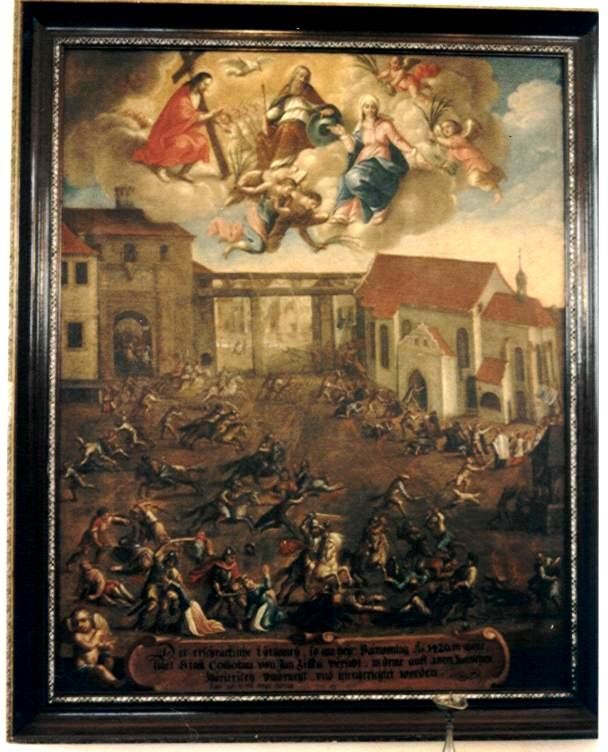 |
The religious
buildings reach old age. The Dekanalkirche Assumption completed at the marketplace Görg
Schreml in 1539, the St. Barbara church in the district Oberndorf Georg Popel of
Lobkowicz, built in 1593. Then the Holy Spirit Church followed in 1598. Finally in 1668 by
Ignatius Church, the Italian Carlo Lurago for the Jesuits built. This church reaches the
size of a medium dome. Finally, inaugurated the Gustav Adolf-Verein in 1899, his
evangelical church in the city park. It was blown up in 1973 by the Czech blown up. |
 |
One of the most
famous people of Komotau was Franz Josef Ritter von Gerstner.
At the turning from the 19th to the 20th century the theatre Parksäle were built and the
flower clock in the park was created.
Famous for Komotau is the Alaunsee, the Mannesmann Company, the bell-producing firm
Herold, the clock factory Kienzle and a company manufacturing a coffee substitute. On the
whole there were 52 major firms there. |
|

Hussiten attack of Komotau |